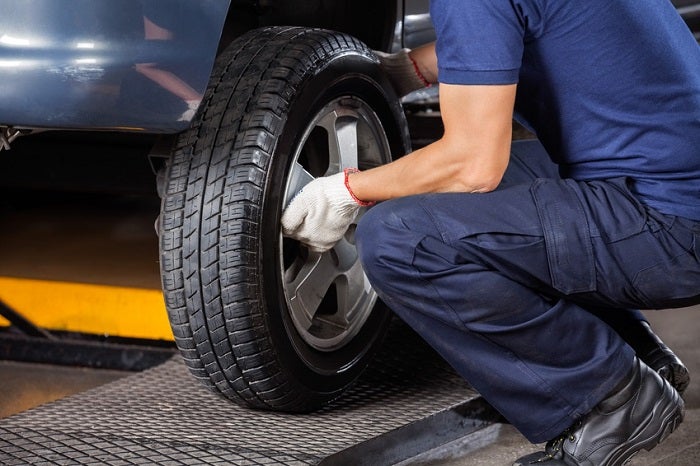Morris Tires: Your Destination for GMC Tires Service Excellence
Morris Tires: Your Destination for GMC Tires Service Excellence
Blog Article
Tire Solution: The Influence of Climate Condition
When it pertains to guaranteeing optimal efficiency and safety and security when traveling, understanding the effect of climate condition on tire service is essential. From scorching heat to icy roads, each weather aspect can considerably influence tire functionality and overall driving experience. By delving right into the results of varying climate condition on tires, motorists can get useful insights that may improve their car's efficiency and durability. In this conversation, we will certainly discover the complex partnership between weather and tire solution, clarifying the significance of weather-specific tire upkeep techniques and considerations.
Heat and Tire Performance
When subjected to heats, tires experience modifications in performance that can dramatically impact vehicle security and handling. The warmth generated from long term driving or heat problems causes the tire rubber to soften, leading to reduced walk life and increased wear. As the rubber becomes softer, the tire's grip when driving lessens, influencing braking distances and general traction. In extreme situations, too much warm can even create tire blowouts, positioning a severe safety risk to the lorry and its owners.

Cold Weather Results
Winter conditions can have a significant influence on tire performance and safety and security. As temperatures decline, tire rubber can harden, resulting in decreased traction on icy or snow-covered roadways. In winter, tires may likewise shed atmospheric pressure much more quickly, which can impact dealing with and fuel performance. Additionally, cold temperatures can create tire sidewalls to stiffen, enhancing the risk of damages from holes or other road threats.
To alleviate the impacts of cold climate on tires, it is important to regularly check tire pressure and inflate them to the manufacturer's advised levels. Making use of winter months or all-season tires created for cool climate conditions can additionally enhance traction and hold on icy or snowy roads. Appropriate tire maintenance, consisting of routine assessments for wear and damage, comes to be much more critical throughout cooler months to guarantee optimum efficiency and safety and security.
Rainy Conditions Effect
Tires with worn-out treads are more susceptible to hydroplaning, where a layer of water constructs up between the tire and the roadway surface area, leading to loss of grip. To combat this, vehicle drivers need to on a regular basis click for info inspect their tires for adequate tread depth and think about spending in tires specifically created for wet problems.
Additionally, wet climate can also lower exposure, making it testing for vehicle drivers to see the road in advance plainly (GMC Tire Service). In such conditions, it is crucial to readjust driving rates as necessary and maintain a safe following range to enable unexpected stops. Properly filled with air tires can additionally assist in preserving control on wet roads by offering better handling and grip
Snow and Tire Safety And Security
When driving in snowy problems, having the appropriate tires can make a considerable difference in safety and security and efficiency. Winter season tires are made with special rubber substances and walk patterns to offer far better grip on snow and ice contrasted to all-season tires.

In addition, drivers ought to take into consideration mounting tire chains in extreme a knockout post snowy problems. Tire chains offer additional traction by grasping the snow and ice, boosting stability and control. Nevertheless, it is necessary to comply with producer guidelines when installing and utilizing tire chains to stop damages to the tires and automobile. By picking the right tires, keeping correct inflation, and taking into consideration extra traction aids like tire chains, vehicle drivers can improve their safety when browsing snow-covered roads.
Weather-Related Tire Upkeep
When confronted with different climate condition, appropriate tire maintenance comes to be a critical element of vehicle security and efficiency. Weather-related tire maintenance incorporates a variety of techniques focused on guaranteeing ideal tire feature and long life in various climate scenarios. One crucial element of weather-related tire upkeep is tire pressure regulation. Changing temperatures can cause tire stress to vary, influencing grip and gas efficiency. Regularly adjusting and examining tire stress according to maker referrals is vital for secure driving in altering climate condition. In addition, tire walk depth plays a significant function in handling different weather components. Tires with adequate tread deepness provide better hold on damp or icy roadways, decreasing the risk of hydroplaning or skidding. When step wear gets to a specific deepness is crucial for preserving grip and security in negative weather condition, evaluating tire walk on a regular basis and replacing tires. By focusing on weather-related tire maintenance, motorists can enhance safety, enhance lorry performance, and extend the life expectancy of their tires.
Final Thought
In conclusion, weather condition problems have a significant impact on tire performance and morris tires safety. From warm affecting tire stress and put on to cold weather minimizing grip, it is vital to consider the weather when maintaining and making use of tires.
In this discussion, we will certainly explore the detailed relationship in between weather condition problems and tire solution, dropping light on the value of weather-specific tire maintenance practices and considerations.

Report this page